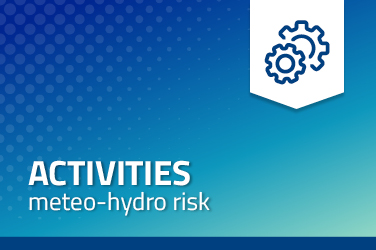Meteo-hydro risk. Activities

The catastrophes that have affected the Italian territory teach that, to effectively protect the lives of citizens and the integrity of infrastructures, it is essential to forecast the events that could possibly occur within an area, identify what the damage could be and the activities to be implemented before, during and after an emergency. For this reason, forecasting and prevention activities have gained greater relevance than in the past.
Forecasting and prevention activities are based on an ever closer connection between civil protection and the scientific research world, with new technological systems for gathering and elaborating information, data processing centers capable of reporting in advance the probability of catastrophic events occurring, the processing of sophisticated and efficient risk mapping, and the promotion of regulatory and technical tools for the prevention and mitigation of damage.
Prediction activities help to understand expected phenomena, especially extreme meteorological events. To achieve this goal, we use tools and sophisticated techniques: applied meteorology, satellite images, weather radars, hydraulic models, etc.
Prediction tools and monitoring networks allow to implement a warning and surveillance system able to activate well in advance the civil protection machine in case of a planned event whose estimated or measured intensity exceeds the predetermined threshold of criticality in the intensity. Exceeding such thresholds will lead to implementing activities under emergency planning, particularly those for the safety of people and properties.
A system of gathering centers is active on the Italian territory for collecting, monitoring, and sharing meteorological, hydrogeological, and hydraulic data. The network of these centers is the National system for early warning. The management of the national alert system is provided by the Civil Protection Department and the Regions through the network of functional centers, regional structures, and competence centers. Each Region shall establish procedures and methods for its early warning system for civil protection at the regional, provincial, and municipal levels.
Prevention comprises those activities for avoiding or reducing the probability of damage following a flooding, a landslide, etc. Prevention activities will, therefore, adopt measures to eliminate or diminish expected effects on the territory.
Preventive interventions may be structural or non-structural.
Structural interventions consist of active or passive arranging works, which aim to reduce the danger of the event, lowering the probability of occurrence or mitigating its impact. Examples of structural interventions are the banks, the rolling tanks, the hydraulic-forestry set-ups, the consolidation of slopes, etc.
Non-structural interventions consist of those actions aimed at reducing damages by introducing constraints that prevent or limit the urban expansion in areas at risk, emergency planning, establishing early warning systems, and monitoring networks.